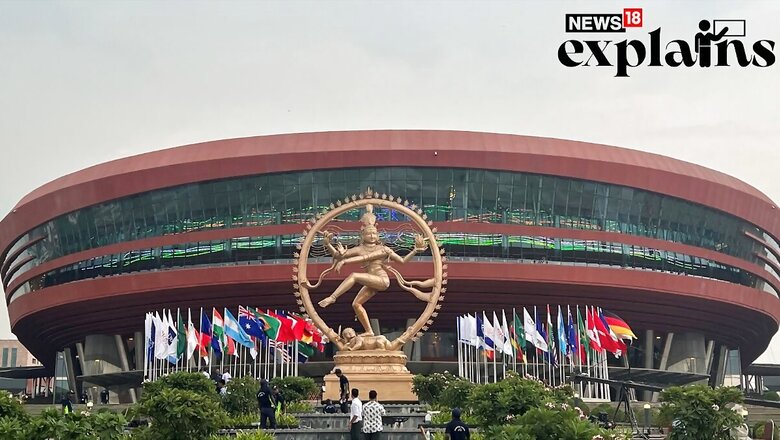Explained | What is G20, Why it Matters & How it Works: All About the Int'l Grouping and Its Origins

views
Leaders and heads of state from the leading economies of the world arrived in New Delhi to attend the two-day G20 summit, beginning from Saturday. World leaders including US President Joe Biden, German Chancellor Olaf Scholz, French President Emmanuel Macron and others will meet at the Bharat Mandapam, situated in New Delhi’s Pragati Maidan over the weekend and discuss the economic and pressing challenges before the leading markets.
Here is everything you need to know about the G20 – from its members to its origin and about the agenda and common communique.
What is G20?
The G20 or the Group of Twenty is an annual summit of the influential grouping of 20 countries, that represent around 85 percent of the global GDP, over 75 percent of the global trade, and about two-thirds of the world population.
What are G20 Countries?
The grouping comprises Argentina, Australia, Brazil, Canada, China, France, Germany, India, Indonesia, Italy, Japan, the Republic of Korea, Mexico, Russia, Saudi Arabia, South Africa, Turkey, the UK, the US and the European Union (EU).
What is G20 Meeting?
The G20 countries meet every year and the summit is the culmination of all the G20 processes and meetings held throughout the year among ministers, senior officials and civil society groups.
The leaders of G20 countries adopt a ‘G20 Leaders’ Declaration’ at the conclusion of the summit stating their commitment towards the priorities discussed and agreed upon the conclusions arrived at the meetings.
When and Why Was G20 Formed?
G20 was founded in 1999 to bring together financial ministers from 19 countries and the European Union to address issues related to the global economy. Earlier, the group was designed to be a forum for finance minister and officials to discuss economic issues.
However, after 2008 financial crisis, the first leaders’ summit was held in view of the financial turmoil to promote better international cooperation. Since then, the finance ministers meet every year under finance track while the heads of states meet under G20 Heads of State and Government Summit.
What has the G20 achieved?
The G20 has been a summit of the global powerhouses to meet and tackle challenges facing the global economy. During the financial crisis, the G20 leaders in 2008 and 2009 summits agreed on a host of measures to tackled economic challenges.
In 2019 summit in Osaka, then US president Donald Trump and Chinese President Xi Jinping agreed to resume talks to settle a major trade dispute.
What Happened at G20 Summit in Bali?
In the last year’s Bali Summit, the deliberation of the world’s 20 biggest economies was hindered by differences over Russia’s invasion of Ukraine. However, Indonesian President Joko Widodo managed to produce a declaration at the eleventh hour after wrangling over the conflict for days.
The Bali Leaders’ Declaration said “most members strongly condemned the war in Ukraine and stressed it is causing immense human suffering and exacerbating existing fragilities in the global economy." It also said that “there were other views and different assessments of the situation and sanctions."
How does the G20 work?
The G20, unlike other formal international bodies, is only an informal grouping. Therefore, unlike the United Nations (UN) or World Bank, it does not have a permanent secretariat or staff.
The G20 works in three major tracks: Finance Track, Sherpa Track and Engagement Groups. While the first two are official, the engagement group is unofficial.
The Finance Track is led by Finance Ministers and Central Bank Governors of the G20 countries, who meet four times a year.
The Sherpa Track is headed by the representative, who are the personal emissaries of the heads of states of the G20 countries. India’s G20 Sherpa is former NITI Aayog CEO Amitabh Kant.
What is the Agenda this Year?
Under India’s presidency, the bloc has centred discussions around more loans to developing nations from multilateral institutions, reforming international debt architecture, regulations on cryptocurrency and the impact of geopolitical uncertainties on food and energy security.
India also intends to focus on the following issues:
- Green Development, Climate Finance and LiFE (Low-carbon Technologies for Fighting Epidemics)
- Accelerated, Inclusive and Resilient Growth
- Accelerating Progress on Sustainable Development Goals
- Technological Transformation and Digital Public Infrastructure
- Multilateral Institutions for the 21st Century
- Women-led Development















Comments
0 comment